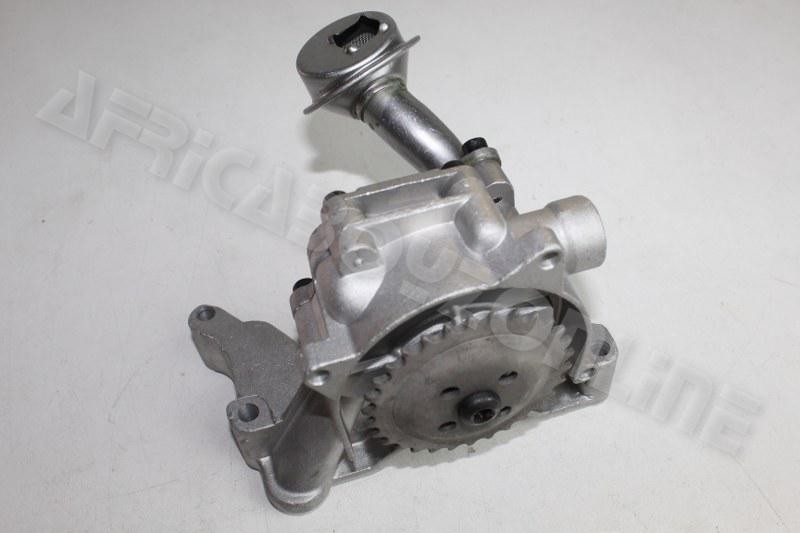Discover the best clp engine for your specific needs.
Discover the best clp engine for your specific needs.
Blog Article
Just How a Clp Engine Can Enhance Performance in Different Industries
The advent of CLP engines marks a considerable change in functional efficiency across different markets, driven by their capacity to enhance gas intake and minimize downtime. As organizations progressively focus on sustainability along with performance, the role of CLP engines becomes even much more vital.
Introduction of CLP Engines
CLP engines, or Continuous Fluid Propellant engines, represent a considerable improvement in propulsion modern technology, specifically for area applications. These engines utilize a continual feed system that permits for the sustained expulsion of propellant, causing boosted efficiency and efficiency contrasted to standard solid or hybrid propulsion systems. By maintaining a consistent circulation of liquid propellant, CLP engines can attain a lot more accurate drive control, which is critical for navigating spacecraft in various goal situations.
The design of CLP engines incorporates advanced products and ingenious gas administration systems. clp engine. This results in lowered weight and enhanced integrity, necessary elements for long-duration room objectives. Furthermore, the constant operation lessens the risk of burning instability, a common difficulty in conventional rocket engines.

Advantages in Production
The manufacturing of Constant Liquid Propellant (CLP) engines presents several notable benefits that boost both performance and cost-effectiveness. Among the main benefits is the streamlined manufacturing procedure, which minimizes the complexity connected with conventional propulsion systems. By utilizing fluid propellant, manufacturers can accomplish better accuracy in engine performance, leading to maximized power outcome and reduced waste.
In addition, CLP engines promote a higher degree of modularity, permitting much easier combination into numerous manufacturing lines. This adaptability can dramatically reduce lead times and boost general operational versatility. Making use of CLP modern technology likewise tends to decrease the requirement for extensive upkeep because of less moving components, which equates right into lowered downtime and functional prices.

Applications in Logistics
Leveraging Continual Fluid Propellant (CLP) engines in logistics offers significant advantages in operational efficiency and reliability. These engines provide a robust solution for various transportation needs, enabling the seamless movement of items throughout substantial ranges. The inherent design of CLP engines enables consistent power result, which converts right into smoother and a lot more foreseeable transportation schedules.
One of the key applications of CLP engines in logistics remains in sturdy products transport, where they can drive both ground and aerial cars. Their ability to maintain high performance under varying tons conditions makes sure that distribution timelines are satisfied, therefore boosting consumer satisfaction. Additionally, CLP engines can be integrated into automated logistics systems, promoting real-time monitoring and enhancing path planning.
Additionally, the toughness of CLP engines minimizes upkeep downtime, enabling logistics business to maximize their operational capabilities. This is specifically valuable in warehousing procedures, where efficiency in handling and moving products is crucial. As logistics remains to advance, the combination of CLP engines represents a forward-thinking technique that not just enhances performance however also sustains the sector's growing needs for reliability and rate.
Impact on Power Performance
Exactly How my review here do Continual Liquid Propellant (CLP) engines improve power efficiency in transport? CLP engines utilize a constant circulation of liquid fuel, optimizing burning processes and preserving a secure thrust outcome. This layout minimizes energy losses connected with traditional combustion engines, where gas distribution can vary and result in ineffectiveness.
The continual operation of CLP engines enables an extra reliable thermal cycle, resulting in higher certain impulse contrasted to standard engines. clp engine. This translates to decreased gas intake for the same amount of work done, substantially decreasing operational costs throughout different transport fields, including aviation and maritime markets
In addition, the capability of CLP engines to keep optimum performance under varying tons problems decreases the requirement for regular velocity and slowdown, better boosting gas performance. Boosted power performance not just adds to set you back savings however likewise results in reduce greenhouse gas emissions, lining up with global sustainability goals.
Future Trends and Innovations
Emerging developments in Continuous Liquid Propellant (CLP) engine modern technology assurance to change the landscape of transport performance and sustainability. As markets pivot toward greener alternatives, CLP engines stand at the center, incorporating ingenious materials and design methodologies that enhance efficiency while decreasing ecological effect.
One of the most encouraging fads is the fostering of hybrid systems that integrate CLP engines with renewable resource resources. This synergy can maximize gas usage and decrease emissions, straightening with international sustainability objectives. Furthermore, advancements in computational liquid dynamics (CFD) are facilitating the layout of more aerodynamically efficient engines, causing decreased drag and boosted fuel performance.
Furthermore, the growth of wise monitoring systems is set to enhance functional efficiencies. These systems utilize data analytics and IoT visit innovation to maximize engine performance in real-time, ensuring that the engines operate within their most you could try here reliable specifications.
As study continues to discover alternate propellant solutions-- such as biofuels and synthetic gas-- the future of CLP engines looks promising. By taking advantage of these technologies, industries can not just improve their effectiveness yet also add dramatically to a cleaner, much more lasting future in transport.
Conclusion
In conclusion, CLP engines stand for a substantial advancement in performance throughout numerous markets. The combination of sophisticated materials and fewer moving components decreases upkeep needs, while positioning with sustainability goals settings CLP engines as a critical innovation for the future.
Report this page